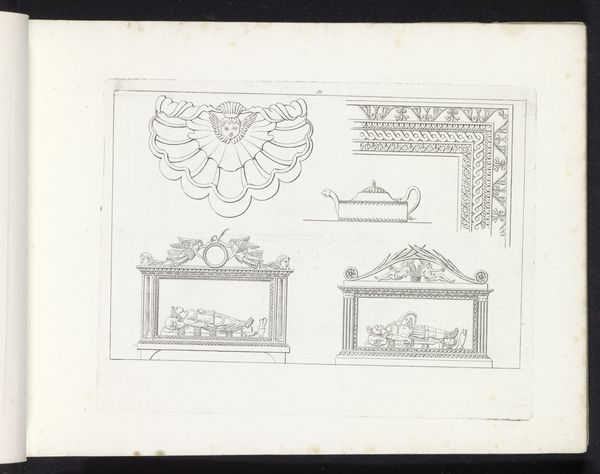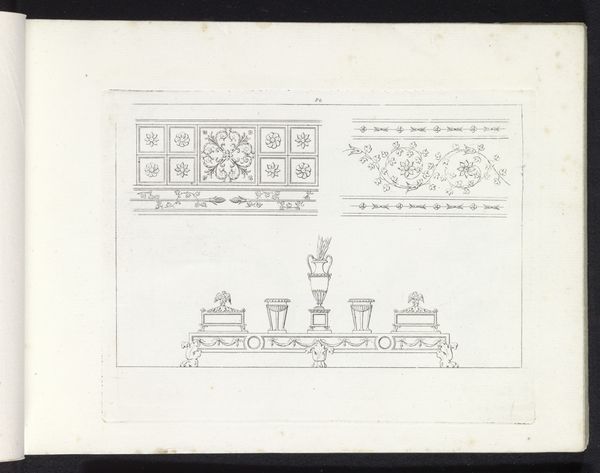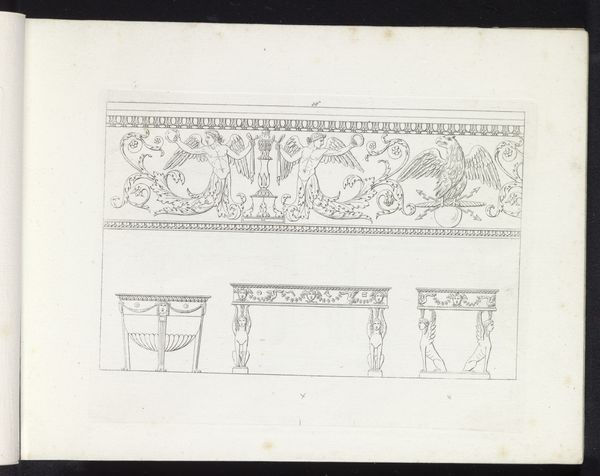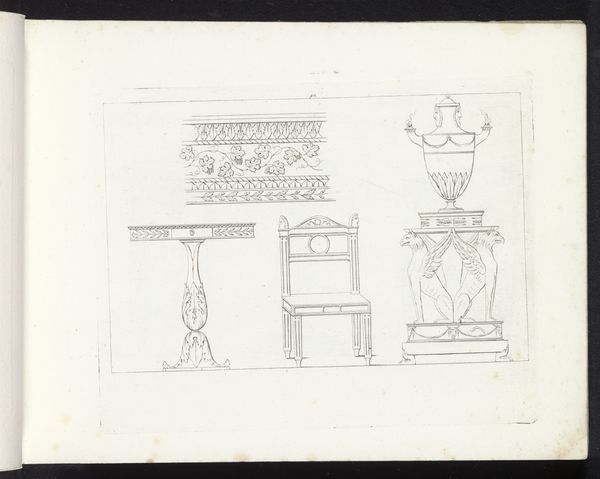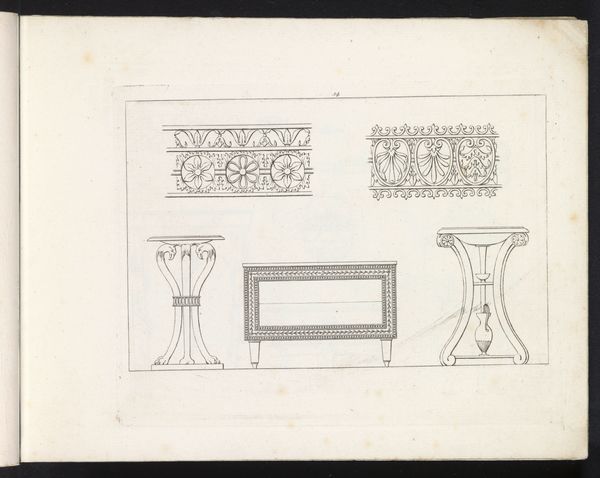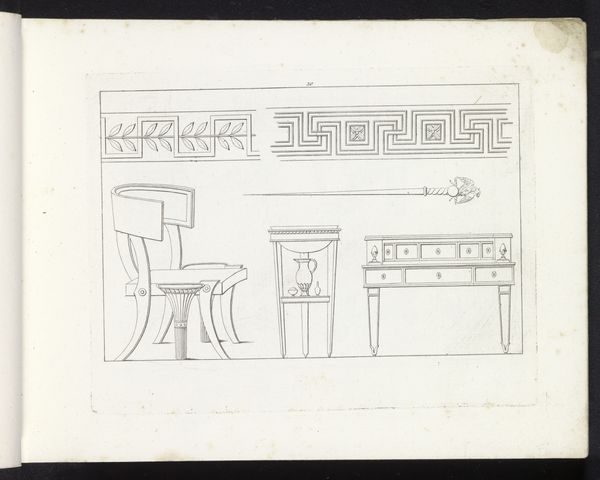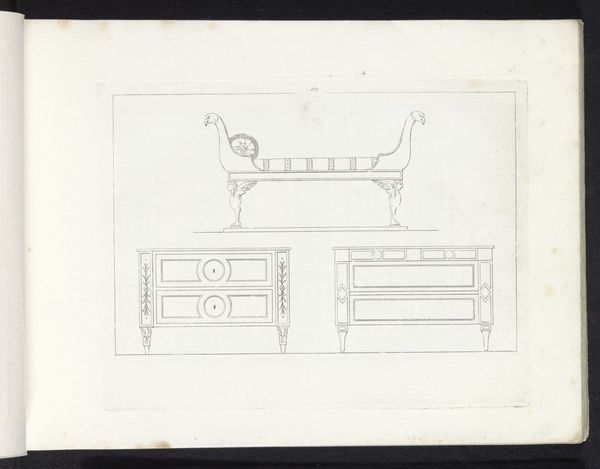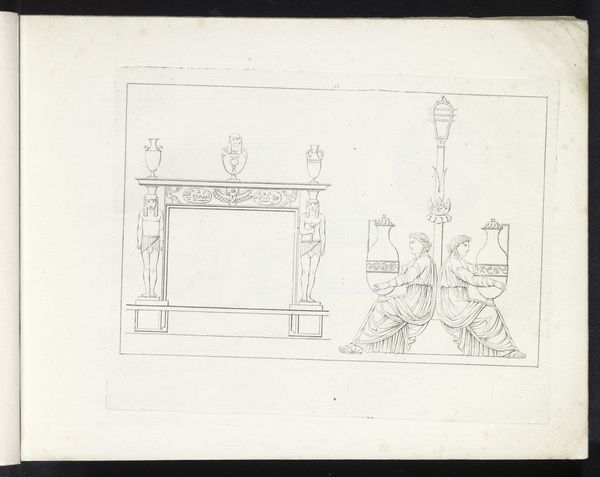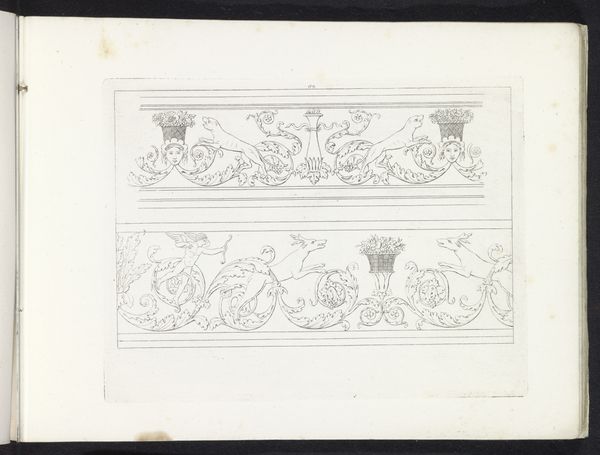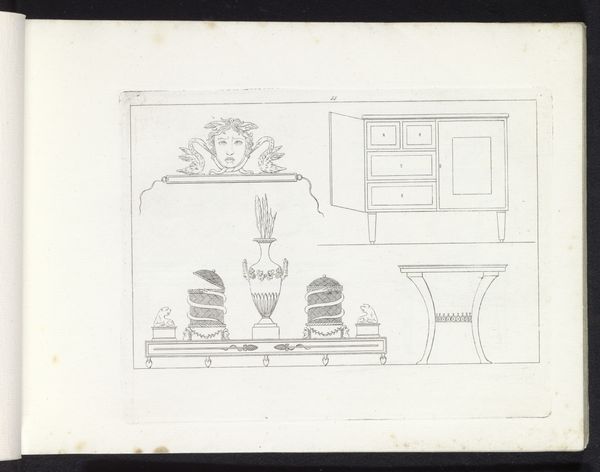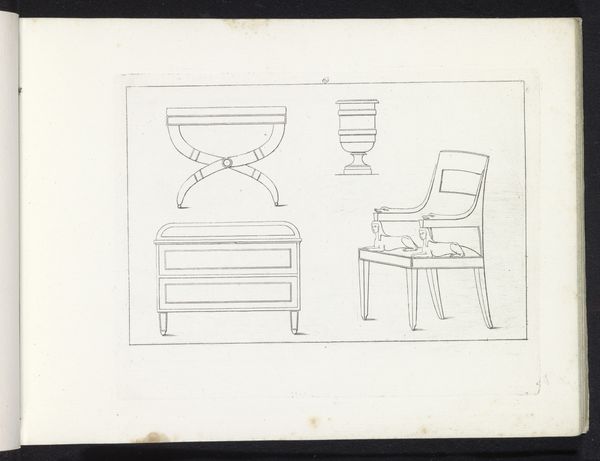
drawing, print, paper, ink, pen
#
drawing
#
comic strip sketch
#
table
# print
#
hand drawn type
#
paper
#
personal sketchbook
#
ink
#
sketchwork
#
geometric
#
pen-ink sketch
#
thin linework
#
pen work
#
sketchbook drawing
#
pen
#
storyboard and sketchbook work
#
decorative-art
#
sketchbook art
Dimensions: height 165 mm, width 214 mm
Copyright: Rijks Museum: Open Domain
Curator: This is "Stoel, tafel en drie ornamentele randen," which translates to "Chair, table and three ornamental borders" by Pietro Ruga, created in 1817. It's an ink drawing, possibly a print as well, on paper. What catches your eye first? Editor: The delicacy of the lines! It's a serene composition, almost weightless, but hinting at societal structures and the way class identity would display wealth in the home, like a period room at a glance. Curator: I agree. The emphasis on linework indicates careful planning and skilled labor involved in producing design templates. Consider the materials: ink, paper, and the tools to create the drawing itself. Editor: Right. The clean lines are meant to be reproduced, industrialized perhaps. But before mass production, this image gestures towards handcrafting luxury—suggesting that maybe gender or race would affect labor involved in making luxury affordable. Curator: Exactly, design history can also examine the means of distributing ornament; to what degree would class influence design and function, or who has access to style? These motifs weren't spontaneous. There was likely intense preparation. Editor: Speaking of preparation, this might come off as basic, but it’s interesting that we, as viewers, immediately understand the implied narrative: the status, values, gender roles encoded within these household objects. Curator: A great point. Consider who would use such objects in 1817. The table perhaps held books, writing instruments, a curated collection. The chair’s very form is inviting, and who gets to sit there and socialize or simply exist without working? Editor: Definitely. Even these ornamental details – the flowers, leaves, and geometric motifs – reinforce class division with all this time and investment for decor. Curator: So it points us back to our original question about process. Labor to refine materials and access them. Craft as another value. Editor: Precisely. And viewing it through our modern sensibilities invites necessary interrogations about inequality, visibility, and cultural production of those times as now. It's more than meets the eye, right? Curator: Absolutely, a look back can give clarity on the way things were made.
Comments
No comments
Be the first to comment and join the conversation on the ultimate creative platform.
